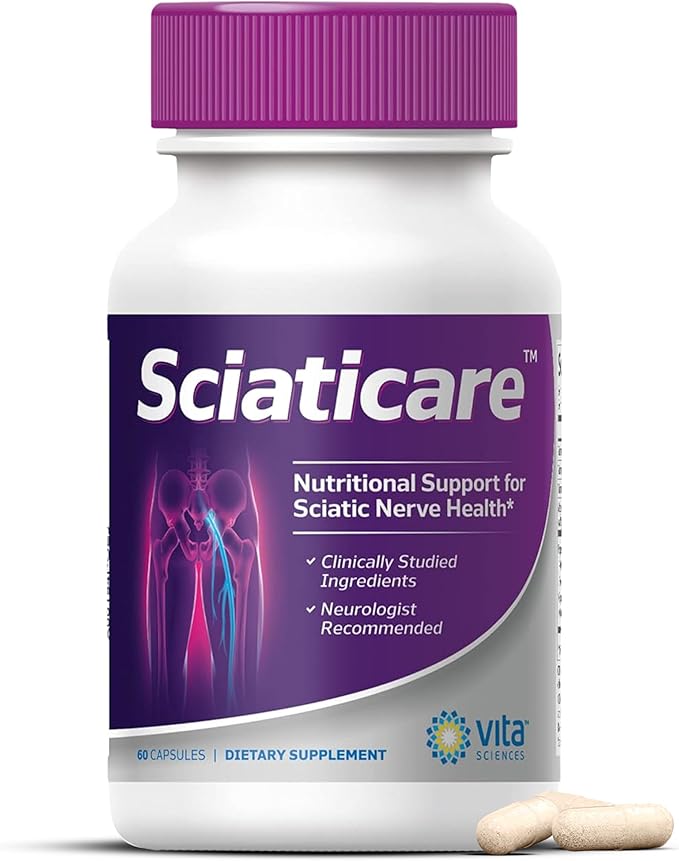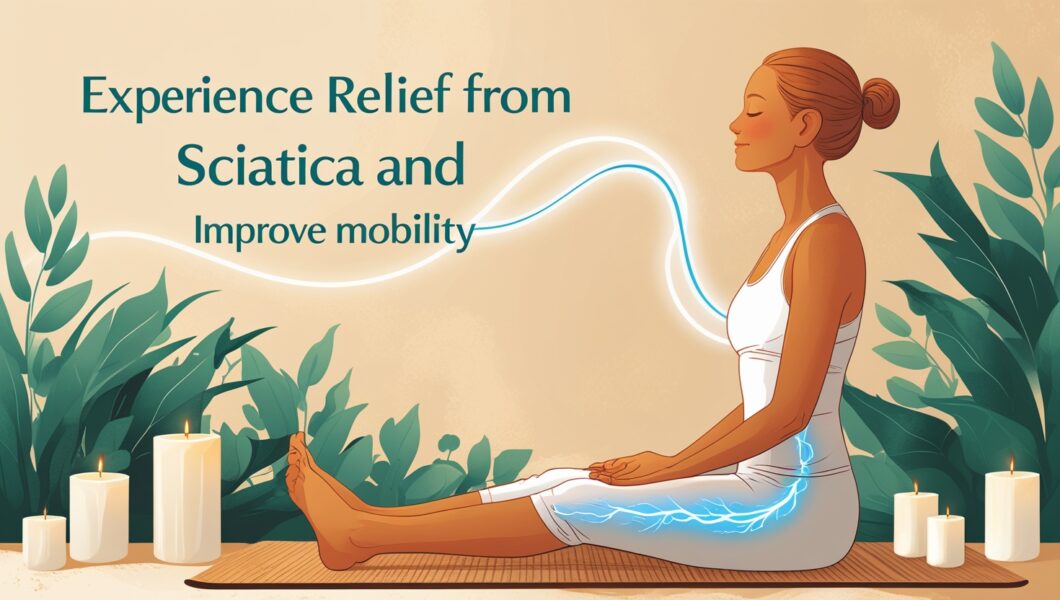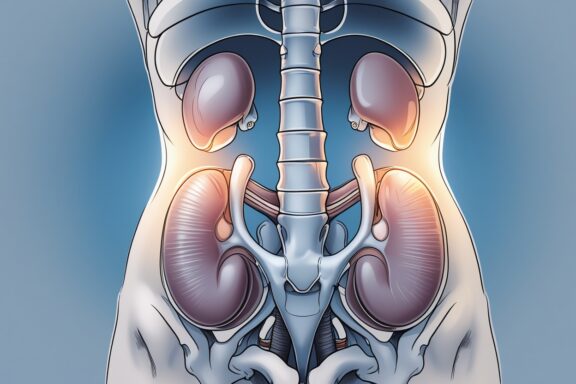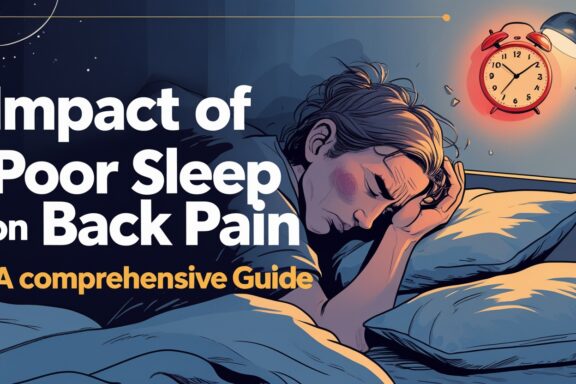Let's face it – sciatic nerve pain can turn your daily routine into a nightmare! Whether you're struggling to get out of bed or wincing every time you take a step, sciatica affects millions worldwide. This debilitating condition doesn't discriminate; it strikes athletes, office workers, and everyone in between. But here's the good news: you don't have to live with this pain forever.
Sciatica occurs when the sciatic nerve – the longest nerve in your body – becomes irritated or compressed. Running from your lower back through your hips and down each leg, this nerve can cause shooting pain, numbness, and weakness that literally stops you in your tracks. However, with the right approach and commitment, relieving sciatic nerve pain is absolutely achievable, and we're here to show you how.

Understanding Sciatica: What's Really Going On?
The Anatomy Behind the Agony
Your sciatic nerve is no ordinary nerve – it's a powerhouse! Originating from nerve roots in your lumbar spine (L4-S3), it's about as thick as your thumb. When this massive nerve gets pinched or inflamed, boy, do you feel it! The pain can range from a mild ache to excruciating, electric-like jolts that make you gasp.
Most commonly, sciatica stems from a herniated disc, spinal stenosis, or piriformis syndrome. Think of your spine as a stack of donuts (vertebrae) with jelly-filled centers (discs). When that “jelly” leaks out, it can press against your sciatic nerve. Ouch! Other culprits include bone spurs, spondylolisthesis, and even pregnancy-related changes.
Recognizing the Red Flags
Sciatica isn't just back pain – it's a whole different beast altogether. Typical symptoms include:
- Sharp, shooting pain radiating from your lower back to your leg
- Numbness or tingling in your leg or foot
- Muscle weakness in the affected leg
- Pain that worsens when sitting or coughing
- Difficulty moving your leg or foot
According to the American Academy of Orthopaedic Surgeons, “Sciatica usually affects only one side of the lower body, and the pain often extends from the lower back all the way through the back of your thigh and down through your leg” (AAOS).
Non-Surgical Approaches to Experience Relief from Sciatica
Physical Therapy: Your First Line of Defense
PT isn't just about doing exercises – it's about retraining your body to move correctly. A skilled physical therapist will assess your posture, gait, and movement patterns to identify what's contributing to your pain. They'll then create a customized program that targets your specific needs.
Research published in the Annals of Internal Medicine found that patients who received physical therapy for sciatica showed significant improvement in pain and function compared to those who didn't. The key? Consistency and proper technique. Your therapist might use techniques like manual therapy, ultrasound, or electrical stimulation alongside targeted exercises.

Exercise Therapy: Movement as Medicine
Here's the thing about sciatica – while your first instinct might be to rest, prolonged inactivity can actually make things worse! Gentle, targeted exercises can help reduce inflammation, improve flexibility, and strengthen the muscles supporting your spine. But remember, not all exercises are created equal when you're dealing with sciatic nerve pain.
Safe Exercises for Sciatica Relief:
- Knee-to-chest stretches – Lie on your back and gently pull one knee toward your chest
- Piriformis stretches – Target that deep hip muscle that might be compressing your nerve
- Cat-cow stretches – Gentle spinal mobility work
- Walking – Yes, it's that simple! Low-impact movement promotes healing
- Swimming – The buoyancy takes pressure off your spine
The Harvard Health Publishing states, “Exercise is usually the better way to resolve sciatica pain than bed rest. Movement helps reduce inflammation and promotes the flow of healing nutrients to the affected area”.
Advanced Treatment Options
Medication Management: Finding the Right Balance
Sometimes, you need a little pharmaceutical help to break the pain cycle. NSAIDs like ibuprofen or naproxen can reduce inflammation around the nerve. For more severe cases, your doctor might prescribe muscle relaxants, anticonvulsants, or even short-term corticosteroids.
However, medication shouldn't be your only strategy. Think of it as a tool to help you participate more effectively in other treatments like physical therapy. The goal is always to reduce your reliance on medications over time while building your body's natural ability to heal and function properly.
Injection Therapies: Targeted Relief
When conservative treatments aren't cutting it, epidural steroid injections can provide significant relief. These targeted injections deliver anti-inflammatory medication directly to the affected area, often providing weeks or months of pain relief. It's like giving your nerve a much-needed vacation from inflammation!
Nerve blocks and trigger point injections are other options that can interrupt pain signals and provide relief. While these aren't permanent solutions, they can give you the pain-free window you need to engage in rehabilitation effectively.
Lifestyle Modifications to Improve Mobility
Ergonomics: Your Environment Matters
Your workspace, car, and home setup can either help or hinder your recovery. Poor ergonomics can perpetuate the very problems causing your sciatica. Invest in a proper chair that supports your lower back's natural curve. When driving, adjust your seat so your knees are slightly higher than your hips.
At home, be mindful of your sleeping position. A firm mattress with a pillow between your knees (if you're a side sleeper) or under your knees (if you sleep on your back) can maintain proper spinal alignment throughout the night.
Weight Management: Lightening the Load
Let's be honest – carrying extra weight puts additional stress on your spine and can worsen sciatica symptoms. Even losing 5-10 pounds can make a noticeable difference in your pain levels. Focus on anti-inflammatory foods like fatty fish, leafy greens, berries, and nuts while avoiding processed foods that can increase inflammation.
Anti-Inflammatory Food Choices:
- Salmon, mackerel, and sardines (rich in omega-3s)
- Spinach, kale, and collard greens
- Blueberries, cherries, and strawberries
- Walnuts, almonds, and flaxseeds
- Turmeric and ginger

Alternative and Complementary Therapies
The Power of Manual Therapy
Chiropractic care, osteopathy, and massage therapy can all play valuable roles in your recovery journey. These hands-on approaches can help improve spinal alignment, reduce muscle tension, and promote healing. However, make sure your practitioner has experience treating sciatica specifically.
Massage therapy, in particular, can help reduce muscle spasms and improve circulation to the affected area. Deep tissue massage or myofascial release techniques can be especially beneficial for addressing tight muscles that might be contributing to nerve compression.
Mind-Body Approaches
Don't underestimate the power of stress management in your recovery! Chronic pain and stress feed off each other, creating a vicious cycle. Techniques like meditation, yoga (with modifications), and progressive muscle relaxation can help break this cycle.
Yoga, when practiced safely with proper modifications, can improve flexibility, strength, and body awareness. Look for gentle, restorative styles rather than intense power yoga classes. Always inform your instructor about your condition so they can provide appropriate modifications.
When to Seek Professional Help
Red Flag Symptoms
While most cases of sciatica resolve with conservative treatment, certain symptoms require immediate medical attention. These include:
- Loss of bowel or bladder control
- Sudden, severe weakness in your leg
- Numbness in your groin or rectal area
- Progressive neurological symptoms
- Severe pain following a traumatic injury
These symptoms could indicate cauda equina syndrome, a medical emergency requiring immediate surgical intervention.
Building Your Healthcare Team
Relieving sciatic nerve pain often requires a team approach. Your team might include your primary care physician, a physical therapist, an orthopedic specialist, and possibly a pain management specialist. Don't be afraid to seek second opinions or explore different treatment approaches if you're not seeing improvement.
Communication between team members is crucial. Make sure all your providers know what treatments you're receiving and how you're responding. Keep a pain diary to track your symptoms and what helps or worsens them.
Prevention Strategies: Keeping Sciatica at Bay
Building a Strong Foundation
Once you've experienced relief from your sciatica, the goal shifts to prevention. Core strengthening exercises are absolutely crucial – think of your core as a natural back brace that supports your spine 24/7. Planks, bridges, and dead bugs are excellent starting points.
Don't neglect your glutes either! These powerful muscles help stabilize your pelvis and reduce stress on your lower back. Weak glutes often contribute to sciatica, so exercises like clamshells, hip thrusts, and lateral walks should be part of your routine.
Movement Throughout the Day
If you have a desk job, set reminders to stand and move every 30-45 minutes. Simple stretches like standing hip flexor stretches or gentle spinal rotations can prevent stiffness from building up. Consider a standing desk or stability ball chair to add variety to your workday posture.
Frequently Asked Questions
Q: How long does it take to experience relief from sciatica? A: Most people see improvement within a few weeks to a few months with proper treatment. However, recovery time varies depending on the underlying cause and severity of your condition.
Q: Can sciatica go away on its own? A: Yes, many cases of sciatica resolve naturally as the inflammation subsides. However, proper treatment can significantly speed up recovery and prevent recurrence.
Q: Is surgery always necessary for sciatica? A: Absolutely not! Surgery is typically reserved for cases where conservative treatments have failed or when there are serious neurological symptoms. Most people recover without surgical intervention.
Q: Can I exercise with sciatica pain? A: Yes, but choose your exercises carefully. Gentle stretching, walking, and swimming are usually safe. Avoid high-impact activities or movements that increase your pain.
Q: What sleeping position is best for sciatica? A: Side sleeping with a pillow between your knees or back sleeping with a pillow under your knees can help maintain proper spinal alignment and reduce pressure on the sciatic nerve.
Final Thoughts: Your Journey to Recovery
The path to relieving sciatic nerve pain isn't always straight or quick, but it's definitely achievable with the right approach and mindset. Remember, what works for one person might not work for another, so be patient as you find your optimal treatment combination.
Stay consistent with your treatment plan, listen to your body, and don't hesitate to adjust your approach as needed. Many people not only recover from sciatica but come out stronger and more body-aware than before their injury. Your spine has an remarkable ability to heal – give it the support it needs, and you'll be amazed at what's possible.
The journey to improved mobility and pain-free living starts with a single step. Whether that's making an appointment with a healthcare provider, starting a gentle exercise routine, or simply changing how you sit at work, every positive action moves you closer to your goal. You've got this – and remember, millions of people have successfully overcome sciatica, and you can too!






